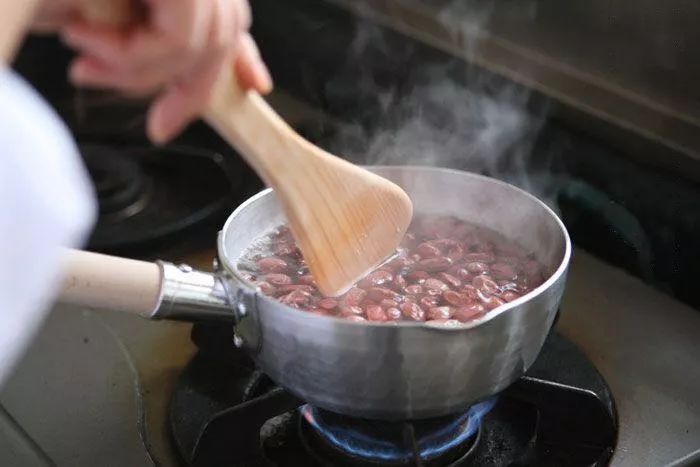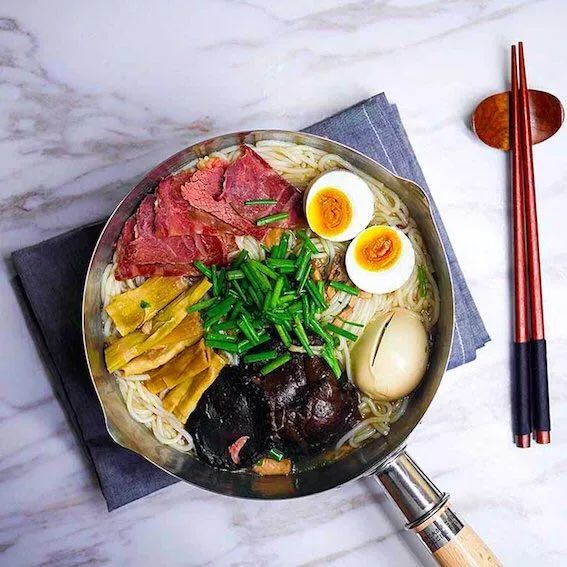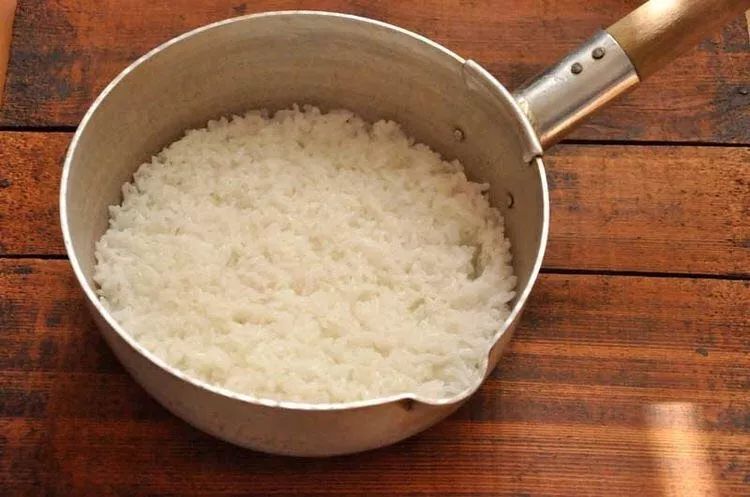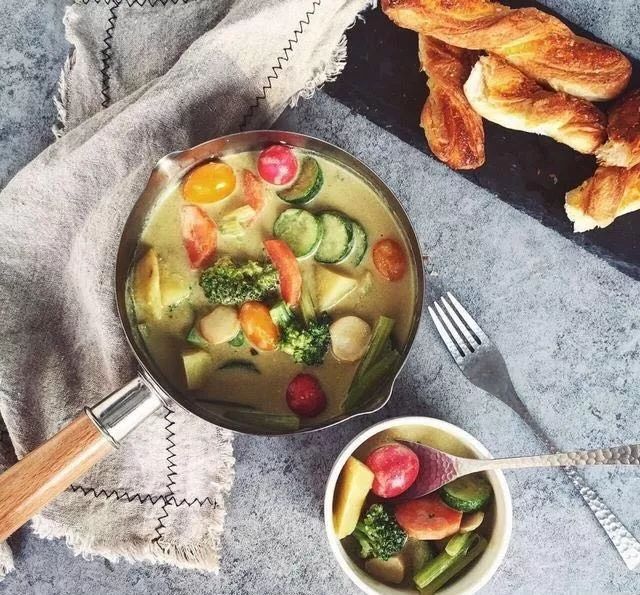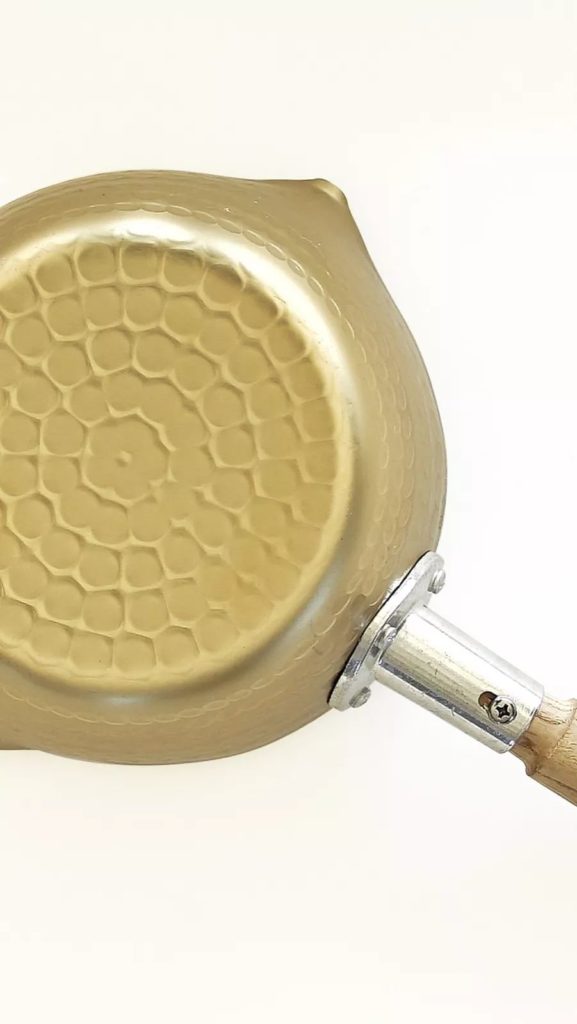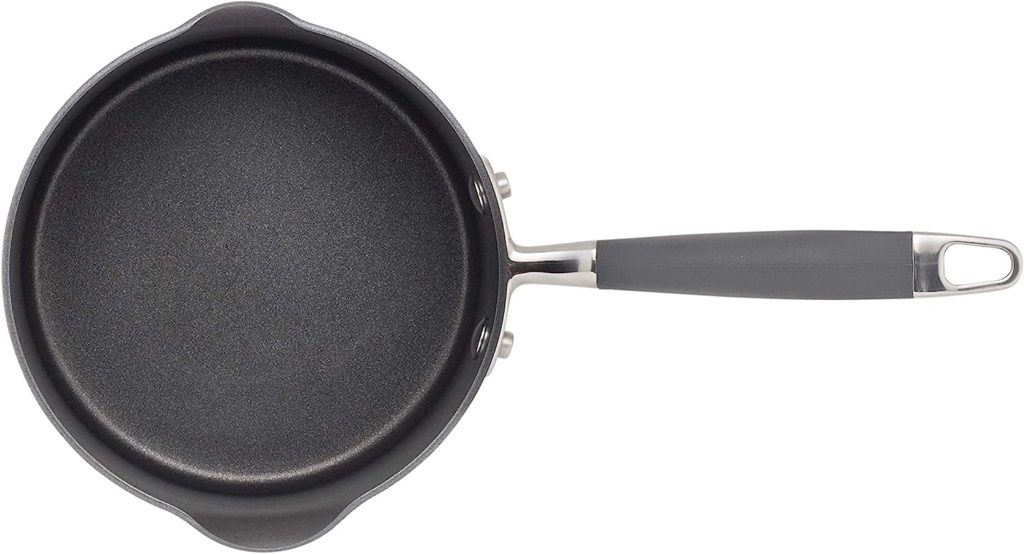Why you should choose a AluminumWh Saucepan
Summer has arrived quickly, and temperatures have already reached 30℃ recently. Given this temperature, I am eager to escape from the kitchen!
A good kitchen environment is certainly important, with room temperature being a crucial factor. As someone who uses the kitchen almost every day, I cannot imagine cooking or stir-frying in a closed and narrow space, sweating profusely in the summer heat.
Improving the kitchen experience can start with selecting the right cookware. Chinese families are likely most familiar with woks, pressure cookers, and perhaps even non-stick pans, which may be chosen out of habit or convenience. Yet, many types of cookware that are not commonly used in Chinese households are also essential, such as cast iron pots for stewing and roasting meat, and flat-bottomed pans for light cooking.
The flat-bottomed pan, which can be operated with just one hand, is lightweight, conducts heat quickly, and is suitable for boiling, frying, stewing, and stir-frying. Whether heating milk or making porridge for breakfast, stewing soup or noodles, blanching ingredients, or preparing late-night instant noodles, one can quickly complete cooking in just a few minutes with this versatile tool, improving cooking efficiency and reducing kitchen labor.

Before the hottest weather arrives, preparing a sautepan will bring many benefits to your kitchen life.
If you are not familiar with the many advantages of a saute pan, let me start talking about it.
This saucepan uses nitric acid anodized aluminum and its material thickness and hand-crafted hammering details put it in a leading position among the saucepan we have seen.
why is sauce pan?
How many pots does your kitchen need?
Typically, households will have several types of pots, such as a wok, steamer, and stew pot. Previously, we recommended cast iron pots mainly for stews.
We generally recommend using a specialized pot for specialized purposes. For example, if you want to stew a chicken, a high-quality cast iron pot ( you can see here, with both an attractive appearance and excellent craftsmanship) will definitely be better than any random pot you can find.
However, if you’re not pursuing taste and texture like a chef for every dish, and want something as light, easy to use, versatile, and with as short a cooking time as possible, then you can choose a yukihira saucepan.
Yukihira saucepan originated in Japan and are also known as “gyuhiira pots,” having been invented for over 1000 years. It is not an exaggeration to say that every Japanese household has a yukihira pot. Because it is so common, even if you have never seen one in person, you can see it in Japanese movies and TV shows.
In the Japanese drama “Midnight Diner,” the boss loves his pot.
Yukihira pot in the Japanese movie “Little Forest”
When it comes to the advantages of a saucepan, it is convenience, it is really too convenient! Below, let me show you what “one pot to the end” means.
Convenience 1: Lightweight
It’s really too light. An aluminum sauce pan with a diameter of only 16cm and a thickness of only 1mm weighs only 1 catty. Even if it is filled with ingredients, it will not exceed 3 catties. If it is a cast iron pot with the same diameter, the weight of the pot alone exceeds the weight of the saucepan filled with ingredients.
The great advantage of being lightweight is that it’s easy to operate, and one hand can hold the pot firmly.
Sometimes, portability is also an important selling point for a pot.
Convenience 2: Food Cooks Faster
When you come home exhausted after a day’s work, you probably want to cook your meal as quickly as possible.
A mother with children tested that using a sauce pan, it only takes a few seconds to warm up the milk taken out of the refrigerator to the perfect temperature for the baby to drink. Cooking porridge only takes 15-20 minutes to complete, so you won’t be rushed when your child is crying and hungry.
Apart from being lightweight, an important characteristic of aluminum pots is their fast heat conductivity.
Why is the sauce pan so fast?
Metals are naturally good conductors of heat, and the side walls of the sauce pan are generally very thin. For an 18cm diameter pan, the side wall thickness is usually around 1mm. Japanese sauce pans are mostly made of aluminum, and aluminum has a thermal conductivity that is more than 5 times that of cast iron. It is normal for it to heat up quickly. Basically, you can put food in it as soon as you put oil in and turn on the heat.
Even with a wall thickness of 1.7mm, the Golden Saucepan weighs less than 350g and has excellent heat conductivity.
Convenience 3: Versatility - it can fry, sauté, deep-fry, boil, and stew, and you can even save on dishes!
Some people say that a sauce pan is a noodle cooking wizard, but I don’t agree. Besides using it as a milk pot or soup pot, an 18cm diameter pot can also be used to stew half a chicken, and a 22cm diameter pot is enough to stew a whole chicken.
Sauce pan is a noodle cooking wizard
It’s also very convenient for tossing vegetables, with more handles than a normal bowl.
Stewed dishes are also possible
You can even fry something with a sauce pan, and one advantage of using a sauce pan to fry things is that it saves oil because the bottom of the pan is small and flat; another advantage is that because the pan is deep, the oil is not easy to splash out.
It’s also very convenient to deep-fry things. Nowadays, some sauce pans come with oil filtering nets, which can be used to fry tempura, french fries, spring rolls, etc. Even if it’s not included, buying one doesn’t cost much.
There’s no pressure in frying food, but you don’t need to put as much oil as shown in the picture.
Sauce pan can even be used to cook rice.
Finally, this pot can be directly placed on the dining table, saving even the need for utensils.
The appearance of the hot pot can make it go straight to the table.
Convenience 4: Not easily overflowing
Everyone has experienced overflowing pots before. It’s not only easy to get burned by the boiling hot water that splashes out, but it also makes the stove very dirty and difficult to clean!
The snowflake-shaped depressions on the inner wall of the sauce pan are not just for aesthetics. These depressions increase the surface area of the pot, making it less prone to overflowing compared to pots of the same capacity.
Hand-hammered texture not only looks good but also has a certain anti-overflow effect. However, whether the hammering on the pot is done by hand or by machine, and the extent of coverage, all affect the price.
The pot body is covered with handmade hammered texture.
Convenience 5: Easy Pouring of Soup
Double-sided spout design with backflow port facilitates pouring and filtering out excess water, and is not easy to spill out.
Why insist on using aluminum sauce pans?
The sauce pan in the store, including the most popular Yoshikawa hot pot, are basically made of stainless steel.
However, we believe that the main advantage of the sauce pot is its light and fast cooking. That’s why we insist on using aluminum pan, which is related to these two points.
The density of stainless steel is three times that of aluminum. You don’t need to check the data, you will know it by holding stainless steel pot and aluminum pot of the same thickness and diameter in your hand.
Secondly, the thermal conductivity of aluminum is much stronger than that of stainless steel, and it heats up quickly. Although it may take about the same time to burn with high heat, sorry, no sauce pan can allow you to burn with high heat, at least not in Japan. They will tell you to use a small flame.
You see, if we give up aluminum, the advantages of the sauce pan will be greatly reduced.
Of course, some people feel scared when it comes to aluminum pots, and there are doubts about “whether it will cause dementia”.
In fact, there is no need to worry.
Let’s look at what authoritative institutions have to say: ▼
The European Food Safety Authority (EFSA) conducted a risk assessment of aluminum in the diet in 2008 and found that based on existing evidence, there is no risk of developing dementia from consuming aluminum in food.
The Joint FAO/WHO Expert Committee on Food Additives (JECFA) conducted two assessments in 2006 and 2011, respectively, and concluded that current research cannot establish a link between aluminum and dementia.
In other words, no direct relationship has been found between aluminum intake and dementia so far.
Furthermore, when aluminum in aluminum cookware comes into contact with air, it immediately forms a hard layer of aluminum oxide, which isolates the aluminum from the food in the pot. Unless you soak the pot in an acidic or alkaline solution, it is impossible for aluminum ions to be released.
Traditional Japanese sauce pan are all made of aluminum. Every household in Japan has an aluminum sauce pan, and even chefs in street-side restaurants use aluminum sauce pan. We have visited Kappabashi Kitchenware Street in Tokyo and Sennichimae Doguyasuji Shopping Street in Osaka, and the shops there also sell aluminum sauce pan.
Why choose a saucepan?
After watching sauce Pan for a while, I think you will find that no matter what material it is made of, it has the same boring shape. The uniform silver-white gloss just wants to tell you “I am a practical tool”, and even if it burns black, you won’t feel distressed.
Electrolytic production of aluminum using nitric acid anodes
Some sauce pan use “anodic aluminum oxide with nitric acid”. Simply put, under the same wall thickness of the pot, it is three times more acid-resistant. Because the inner wall is in direct contact with food, it has always been the weak link of the sauce pan. Pots using this technology are actually more durable.
Our process of selecting pots is as follows: we bought three or four initially favored Japanese sauce pots on Amazon and other stores, and tried them out after returning home. The silver-white pure aluminum sauce pot basically changes color on the outer wall when heated, and even has some impurities precipitate when boiling water for the first time.
Moreover, the anodized aluminum oxide film itself is an aluminum oxide that does not react with air, used to protect the pot body, and will not cause food safety problems.

These are several sauce pans we bought during our selection process. They are all made of aluminum. At first glance, they look similar except for the color difference. But next, I will tell you what differences there are in workmanship. The final conclusion is that you get what you pay for.

Wall thickness
It’s not just about the technology. As we have mentioned before, for the sauce pan, we need to find one with a side wall thickness of more than 1mm. If it’s too thin, it’s prone to deformation. Wall thickness implies material usage, which is related to cost. Quality is our top concern. If we were to use it ourselves, we would also choose a sauce pan with a thick side wall.
Thise saucepan on Amazon has high-quality materials in every detail, such as the thickness and craftsmanship of the material used at the junction of the handle and the pan body, which is clearly better than the previous two. In fact, the saucepan is not a difficult product to make, and the difference in final price comes from the quality of your materials and the additional labor attached to it.
Manual hammering
Maybe it’s because of their persistence in the spirit of craftsmanship, insisting on manual hammering and never using overseas factories. This pot is 100% made in Japan from the body to the wooden handle.
All saucepan have hammered patterns, which not only enhance their appearance but also reduce overflow. However, those who insist on manual hammering can probably only be found in Japan, which is why we insist on finding Japanese-made saucepan.
Both the bottom and the walls of the pot have hand-hammered patterns. However, many pots, such as the two we are comparing, have some pots with no hammered pattern on the bottom, and some with a very regular pattern that is clearly done by a machine.
Instructions for use
1. Because it is made of aluminum, the aluminum saucepan cannot be placed on an induction cooker or put into an oven.
2. Similarly, to avoid scratches, do not put it in the dishwasher, and it is best not to use metal utensils to shovel or stir directly in the pot to prevent the coating from falling off.
3. Cook on low heat as much as possible.
4. Although the saucepan is not easy to spill, whether it spills or not also depends on the amount of ingredients put in. Do not exceed the maximum scale line and cook on low heat.
5. The pot body should avoid drastic temperature changes, such as directly rinsing the hot pot with cold water, to prevent deformation.
6. If acidic liquids such as vinegar are used, please clean them with neutral detergent as soon as possible after cooking.
7. After cooking, if you soak the entire pot in water, it is not conducive to the maintenance of the wooden handle. Please only clean the pot body.
8. If the pot wall turns black, it is because of the reaction between water and the pot wall, but it does not affect normal use. If you really care, you can boil apple peel and lemon, and the black will disappear.
9. The combination of the handle and the pot body is a screw rivet structure, which is easy to loosen. Tighten it when it is loose.
10. The saucepan is a consumable item, and it may need to be replaced after three to five years of use. Don’t expect it to last a lifetime.





